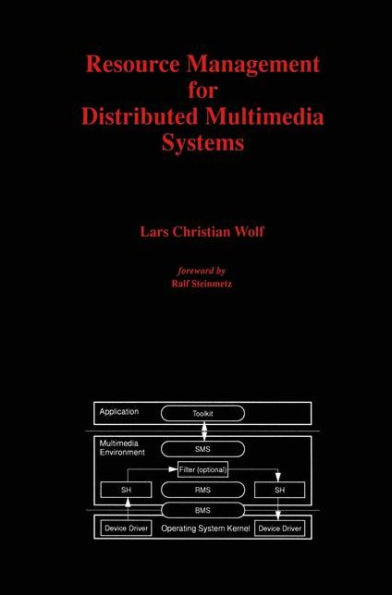Resource Management for Distributed Multimedia Systems
Resource Management for Distributed Multimedia Systems addresses the problems and challenges of handling several continuous- media data streams in networked multimedia environments. The work demonstrates how resource management mechanisms can be integrated into a stream handling system. The resulting system includes functions for Quality of Service (QoS) calculations, scheduling, determination of resource requirements, and methods to reduce resource requirements. The work explains the following:
• a suitable system architecture and resource management scheme that allows for the provision and enforcement of QoS guarantee,
• resource scheduling mechanisms for CPU and buffer space,
• mechanisms to measure and collect resource requirements,
• methods to extend resource management to future scenarios by allowing the reservation of resources in advance and offering sealing mechanisms.
. Resource Management for Distributed Multimedia Systems is a comprehensive view of resource management for a broad technical audience that includes computer scientists and engineers involved in developing multimedia applications.
1117657887
• a suitable system architecture and resource management scheme that allows for the provision and enforcement of QoS guarantee,
• resource scheduling mechanisms for CPU and buffer space,
• mechanisms to measure and collect resource requirements,
• methods to extend resource management to future scenarios by allowing the reservation of resources in advance and offering sealing mechanisms.
. Resource Management for Distributed Multimedia Systems is a comprehensive view of resource management for a broad technical audience that includes computer scientists and engineers involved in developing multimedia applications.
Resource Management for Distributed Multimedia Systems
Resource Management for Distributed Multimedia Systems addresses the problems and challenges of handling several continuous- media data streams in networked multimedia environments. The work demonstrates how resource management mechanisms can be integrated into a stream handling system. The resulting system includes functions for Quality of Service (QoS) calculations, scheduling, determination of resource requirements, and methods to reduce resource requirements. The work explains the following:
• a suitable system architecture and resource management scheme that allows for the provision and enforcement of QoS guarantee,
• resource scheduling mechanisms for CPU and buffer space,
• mechanisms to measure and collect resource requirements,
• methods to extend resource management to future scenarios by allowing the reservation of resources in advance and offering sealing mechanisms.
. Resource Management for Distributed Multimedia Systems is a comprehensive view of resource management for a broad technical audience that includes computer scientists and engineers involved in developing multimedia applications.
• a suitable system architecture and resource management scheme that allows for the provision and enforcement of QoS guarantee,
• resource scheduling mechanisms for CPU and buffer space,
• mechanisms to measure and collect resource requirements,
• methods to extend resource management to future scenarios by allowing the reservation of resources in advance and offering sealing mechanisms.
. Resource Management for Distributed Multimedia Systems is a comprehensive view of resource management for a broad technical audience that includes computer scientists and engineers involved in developing multimedia applications.
109.99
In Stock
5
1

Resource Management for Distributed Multimedia Systems
146
Resource Management for Distributed Multimedia Systems
146Paperback(Softcover reprint of the original 1st ed. 1996)
$109.99
109.99
In Stock

Product Details
| ISBN-13: | 9781461286134 |
|---|---|
| Publisher: | Springer US |
| Publication date: | 09/27/2011 |
| Edition description: | Softcover reprint of the original 1st ed. 1996 |
| Pages: | 146 |
| Product dimensions: | 6.10(w) x 9.25(h) x 0.01(d) |
From the B&N Reads Blog
